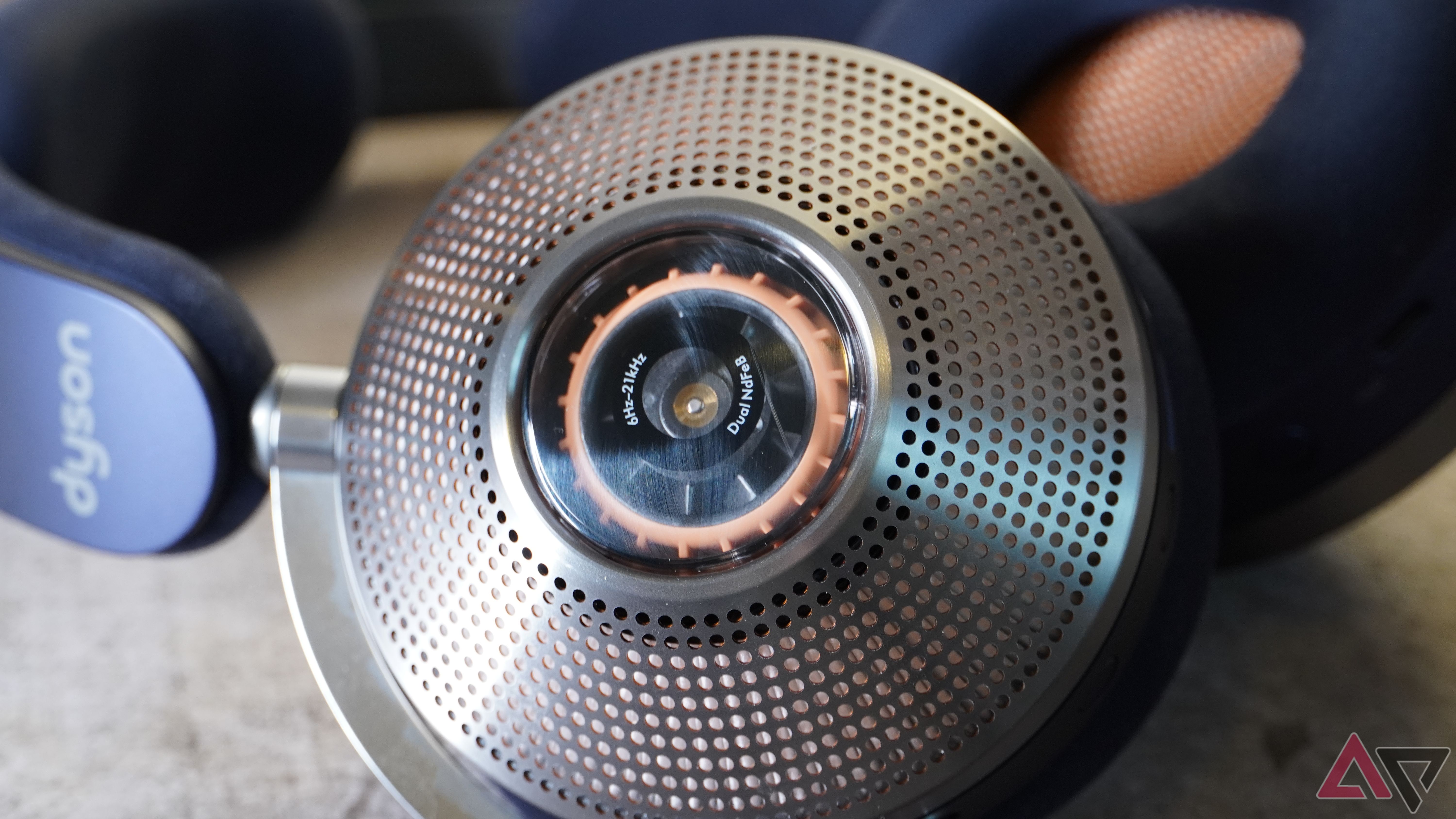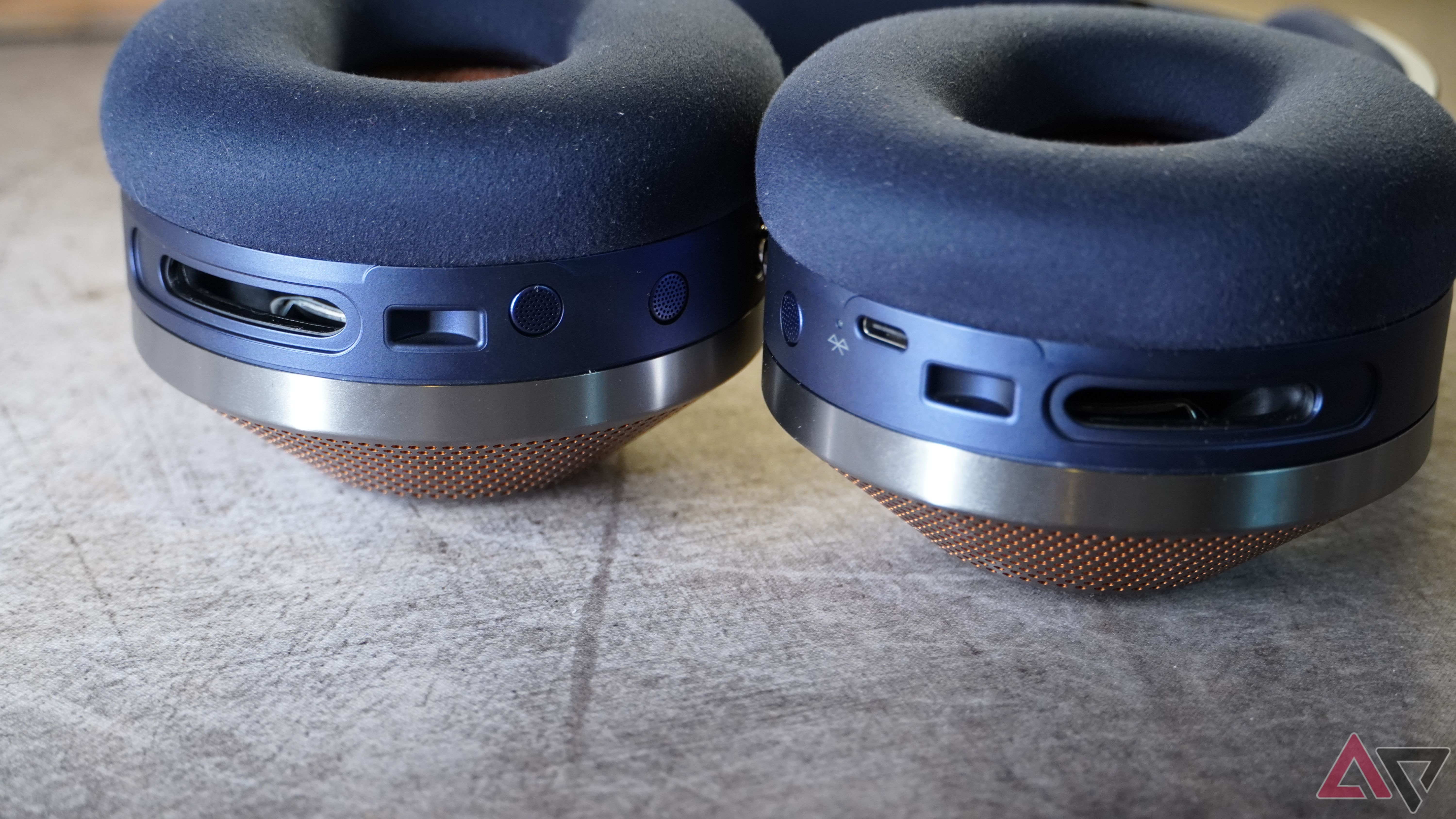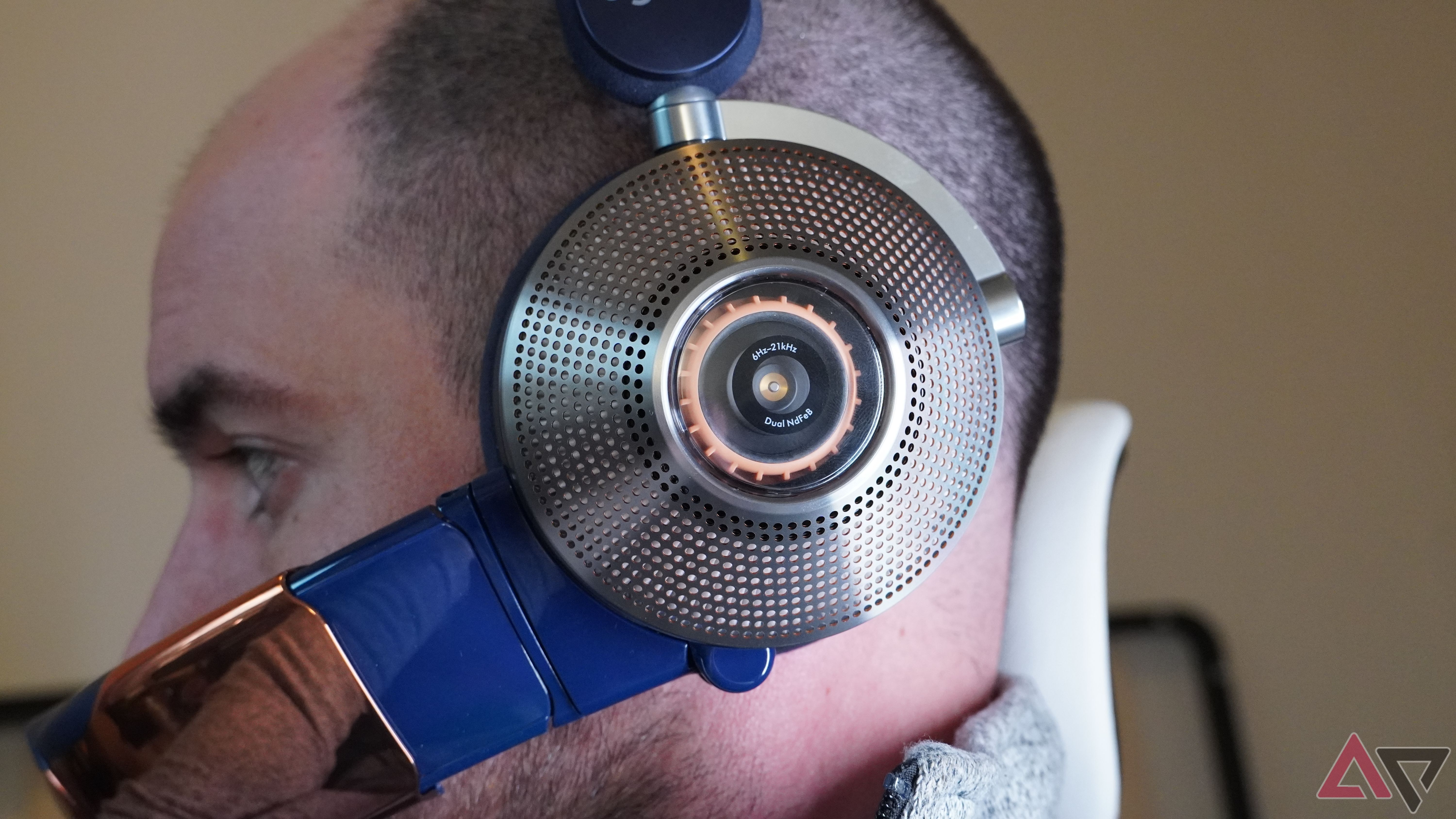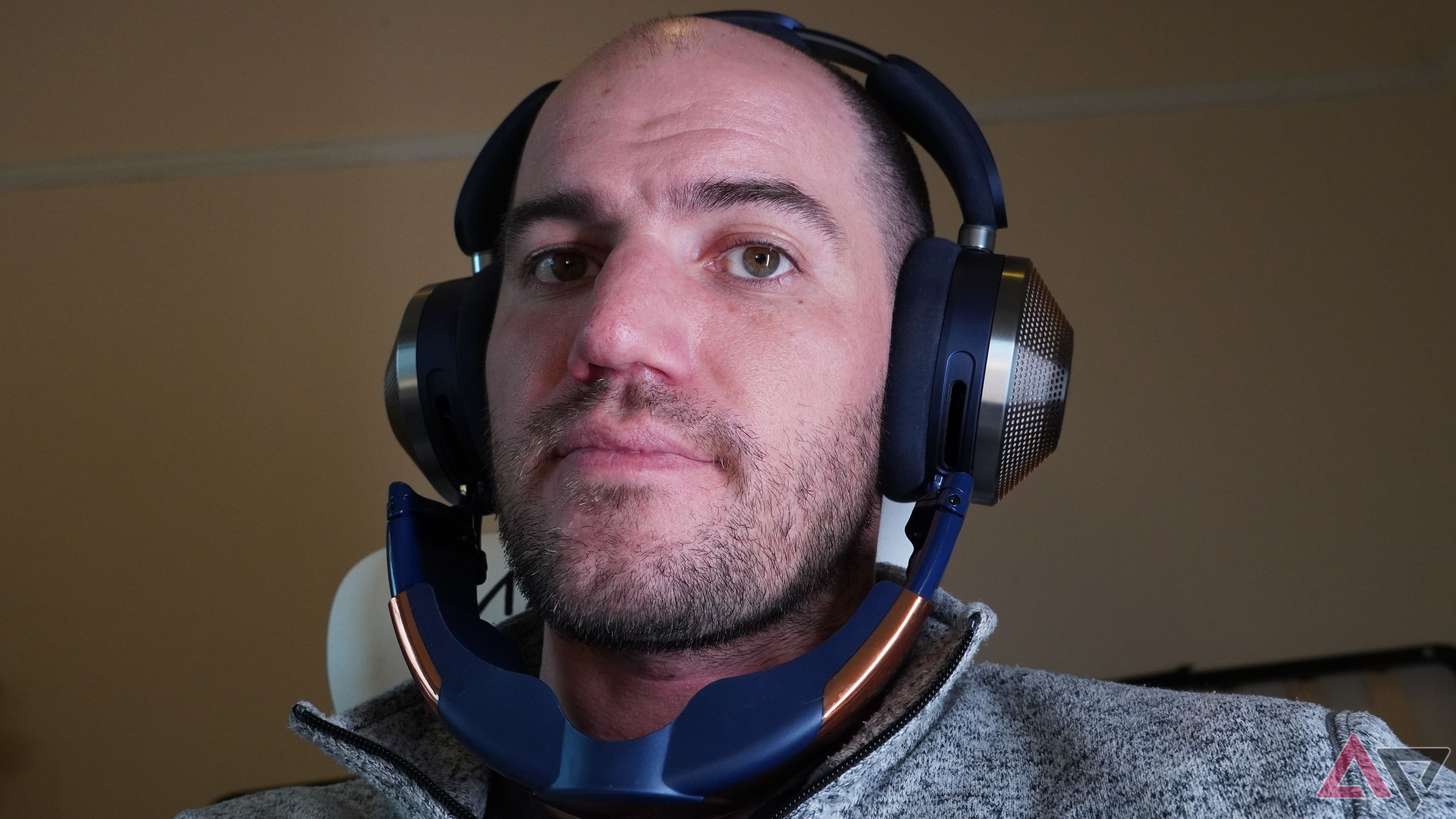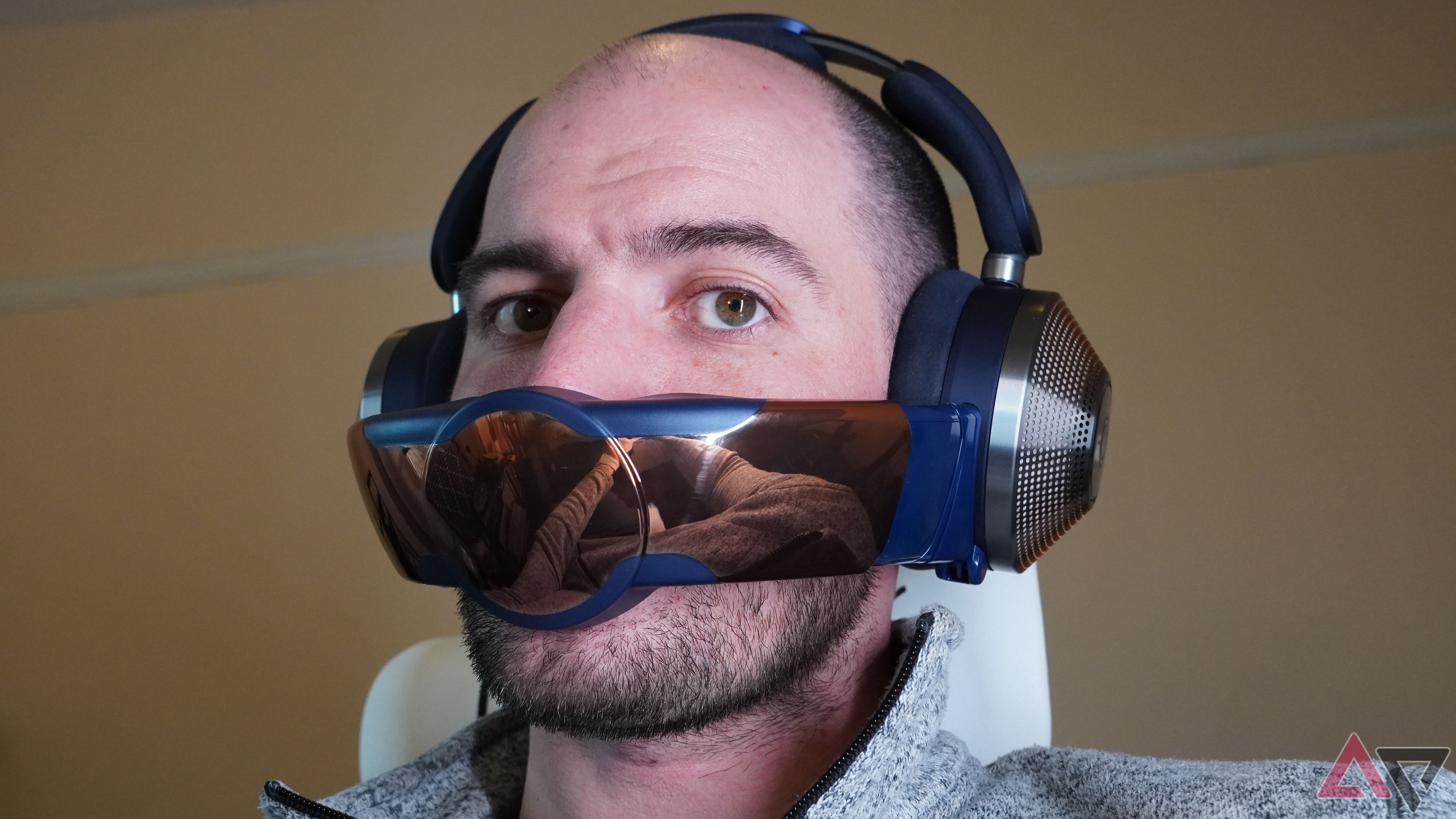Summary
- At $800, the Dyson Zone headphones are elegant but bulky, with an air filtration system that may not justify the high price.
- The headphones excel in build quality, ANC, and audio quality, but fall short in comfort and battery life, making them hard to recommend.
- While the unique air filtering feature is intriguing, other alternatives offer better value and performance at a fraction of the cost.
A little over a year ago, Dyson came out of nowhere with the Dyson Zone — a pair of headphones that seem to have been birthed by the global pandemic. These headphones feature a one-of-a-kind visor attachment that works with a filtration system inside the headphones to ostensibly provide users with clean air while they listen to chill beats. At $800, the Dyson Zone are a premium package, and while they have a lot to be commended for, it’s a little hard to give them a hearty thumbs up.
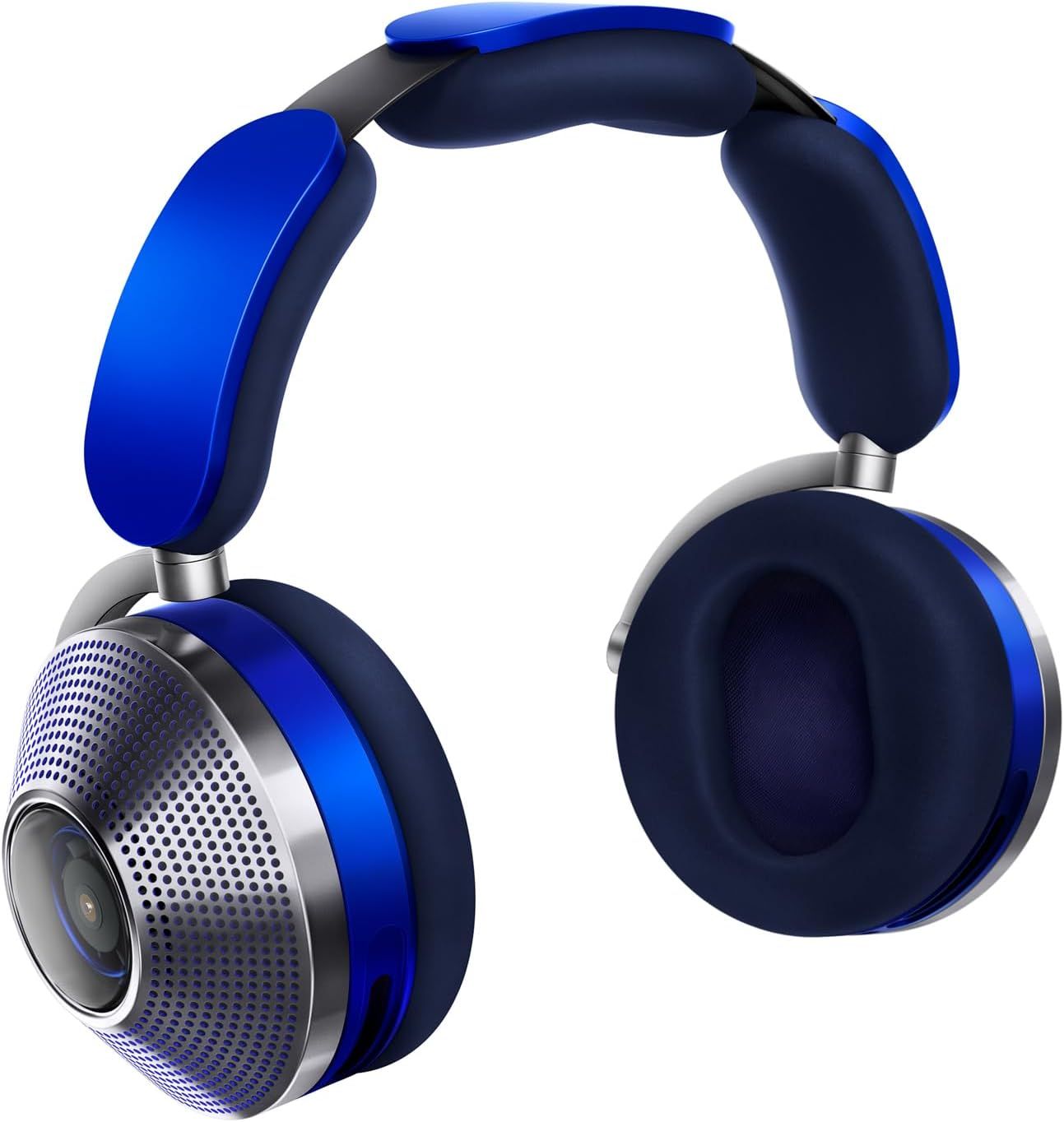
Dyson Zone
The Dyson Zone are a respectable and elegant pair of headphones that see their size, weight, and price critically inflated by adding their unique air filtration system. Without readily verified, plain-to-see benefits and plenty of trade-offs, it’s hard to recommend these over the many superb alternatives that cost substantially less.
- Great built quality
- Powerful ANC and transparency
- Solid audio
- Big and heavy design
- Big battery is easy to waste
- Air filtration is awkward and dubious
- Expensive
Price and availability
A lot in the box for a lot from your wallet
The Dyson Zone headphones come in different bundles available from Dyson’s website and other retailers, such as Amazon. As tested here, the Dyson Zone Absolute+ bundle is $800; the kit includes the headphones, a carrying case and pouch, a USB-C charging cable, an in-flight audio adapter kit, as well as the clean air visor, two sets of filters, a sleeve for the visor, and a cleaning brush for the visor.
The standard kit costs $700 and omits the visor sleeve and in-flight adapter, opts for a different case, includes just one set of filters, and leaves out the soft sleeve for the headphones. Since the launch of these headphones, street prices have decreased quite a bit. The standard bundle floats closer to $550 at Amazon, and the Absolute+ bundle was $600 at Dyson at the time of writing.
Specifications
- Brand
- Dyson
- Battery Life
- 50 hours
- Bluetooth
- Bluetooth 5.0
- Noise Cancellation
- Yes
- Microphones
- 8 Noise cancelling, 2 Noise reduction, 1 Telephony
- Weight
- 670g (with visor); 595g (without visor)
- Supported codecs
- SBC, AAC, LHDC
- Foldable
- No
- Charging type
- USB-C wired
- Multipoint
- No
- Dimensions
- 200 x 240 x 210mm (with visor); 200 x 240 x 107mm (without visor)
- Retail price
- $800
- Carrying case
- Yes
- Driver size
- 40mm
Design, hardware, and what’s in the box
Mixed bags, almost literally
Inside the box for the Dyson Zone Absolute+ bundle tested here, you’ll find the headphones, a tanky carry case and a soft pouch, a gorgeously braided charging cable, a special cable for 3.5mm-to-USB-C audio alongside an airline adapter, a visor, a pouch for the visor, a cleaning brush for the visor, and two pairs of air filters for the headphones. The mix of quality from all of these elements is curious, with the Dyson Zone itself proving an amalgam of truly exceptional design and what feels almost like true junk in the form of the creaky plastic visor.
The headphones are built with a sturdy metal headband, metal yolks, and even have a metal grille on the outside of the earcups. In true Dyson fashion, the earcups have a transparent section that shows through to where the little turbines spin up to pull in air. The metal earcup covers are easily popped off to access the replaceable air filters.
With all that’s packed in, the headphones are huge despite fitting just 40mm drivers. They’re as big as plenty of other hi-fi headsets I’ve tested, such as the Monolith M570. And though the padding on the earcups and headband are substantial, they don’t fully compensate for the weight of the headphones, which clock in at over 1.3 pounds before attaching the visor. They’re still largely comfortable, but can wear on the top of my head after a while and don’t facilitate raucous headbanging.
Dyson has set a power and pairing button in the left earcup, which is also responsible for cycling through the air filtration levels. A joystick on the right earcup conveniently handles playback and volume with flicks and taps, and it can call up a voice assistant with a long press.
Audio and ANC
Coming in hard out of left field
Dyson makes fans, vacuums, as well as hair care products, and a lamp. Its schtick is fancy, often over-engineered ways of moving air. So, while it might be unexpected for Dyson to come out with a pair of headphones, what is sound other than moving air? As it turns out, Dyson is pretty good at it.
The Dyson Zone sound proper good. The bass reaches a low rumble that keeps music pumping, and it blends smoothly into the mids. Treble sings out crisply, though it might have proved even better if the headphones had different codec support rather than limiting me to AAC on a Pixel 7 Pro. The brightest notes high up in the upper registers get a little compressed, notably reducing the soaring synths in Of Montreal’s Coquet Coquette. Many Chinese-made phones support LHDC, though I couldn’t get it working with the headphones.
The headphones’ ANC and pass-through sound capabilities are quite impressive, though. With audio pass-through enabled, the sound comes through incredibly convincingly.
The headphones’ ANC and pass-through sound capabilities are quite impressive, though. With audio pass-through enabled, the headphones let sound through incredibly convincingly. An occasional sound will get punched up above a natural level, but beyond that, it’s almost likely they’re completely transparent. And when you want silence, the ANC mode delivers. It majorly reduces external droning noises, especially at the low end, and it even does a remarkable job hushing more complex audio, such as the bustle of a noisy cafe. With a little quiet audio playing, overriding most external sounds is easy.
The many mics packed into these headphones are clearly doing their work, though Dyson only reserves one for calls. This leaves my voice coming through about as thin as it does on any old Bluetooth device. It sounds somewhat distant and digitized. While the headphones successfully skimmed out background noise, the process further reduced the quality of my voice being captured by the mic.
Features and app
Highlight feature hides lack of others
The highlight feature of the Dyson Zone is its air-filtering visor. With an air filter installed into each earcup, the headphones suck air in through the sides and pump it into the visor to create positive pressure around the wearer’s nose and mouth, thereby providing fresh air (tested to ISO 29463 to remove 99% of ultrafine pollutants) and keeping unfiltered air out. Conceptually, that’s kind of rad. But in practice, I’m not sure there’s much real value.
The visor is flimsy—an apple falling far from the tree that is the downright impressive design of the headphones themselves. It’s creaky, offers limited adjustability to fit different faces well, and is a little confusing to put on. It comes with a practically catastrophic hit to battery life, and the whirring of the turbine powering the airflow is attached to your ears, right where you can hear them spinning away all too well.
I have no way of verifying the visor’s ability to keep unfiltered air from reaching my mouth and nose, but when I put out a nearby candle with the visor running at full blast, the scent of the smoke could still reach my nose. That constant air flow onto my lips was also very quick to dry them out. And when the visor isn’t attached, the headset is just left with two broad holes on the edges of each earcup where they link up with the ventilation. What’s perhaps most wild is how this feature distracts from what could otherwise be an enticing pair of headphones.
Since air filtration is the highlight feature, Dyson appears to have not focused as heavily on some others. Notably, Bluetooth multipoint isn’t supported, which means manually switching from device to device. And though AAC and LHDC are supported, quite a few other popular codecs for high-fidelity listening aren’t.
The app features some controls for the headphones, but these are limited. You can select from three EQ profiles. One boosts treble and bass slightly, another adds even more bass into that mix, and a third tries to keep neutral. ANC and transparency mode can also be selected in the app, though there are no custom levels. The ability to turn off ambient sound control entirely is also only available within the app — oops.
The more interesting features of the app live on the home screen. These include live readouts of the sound levels inside and outside the headset, showing you how loud it is for you, and how much noise your headphones are reducing. It’s a good metric to have for ear health, though it’s painful to see the internal sound ramp up to 80dB every time I double-tap the left earcup to change ambient sound modes. The app also provides a live readout of surrounding NO2 levels while running the air filter, though this might have been more interesting if it could show more types of particulates.
Battery and charging
A big battery ready to be drained in a hurry
The Dyson Zone are huge and pack in a considerable battery that boasts of a 50-hour runtime even with ANC running. I have little reason to doubt this, given the headphones even have the power to run the internal turbine that powers the air filtering system. However, getting 50 hours of runtime will be tough in practice. The headset goes into a standby mode whenever it’s removed, but this doesn’t fully shut the headphones down, nor does it disconnect them from their source. It just stops playback and mutes any audio.
Not only can this be a little frustrating if you don’t realize you’re still connected to the headphones and try to play audio from your phone, but it also slowly wastes a lot of battery life. Having started at a full charge, I was down to 20 percent within a week without having listened to even 10 hours of audio and having omitted the mask the whole while.
Kicking on the air filter, you’re looking at a maximum of 4 hours of listening time, and that can go even lower if you dial up the power of the filter. When the battery drops below 10%, the filtration system won’t turn on. A half-hour of charging will get you nearly 10 hours of listening time, though, so you can get back up and running pretty quickly.
Competition
When the AirPods Max look like a bargain
In a way, the Dyson Zone stand alone, as there aren’t other air-filtering headphones out there. However, with the questionable utility of that feature, they have some dangerous competition from just about every high-end pair of headphones out there. The Sony WH-1000XM5 are exceptional wireless headphones, offering portability and top-notch ANC at a fraction of the price Dyson seeks even when the Zone are discounted. It’s a similar story to the Bose QuietComfort Ultra.
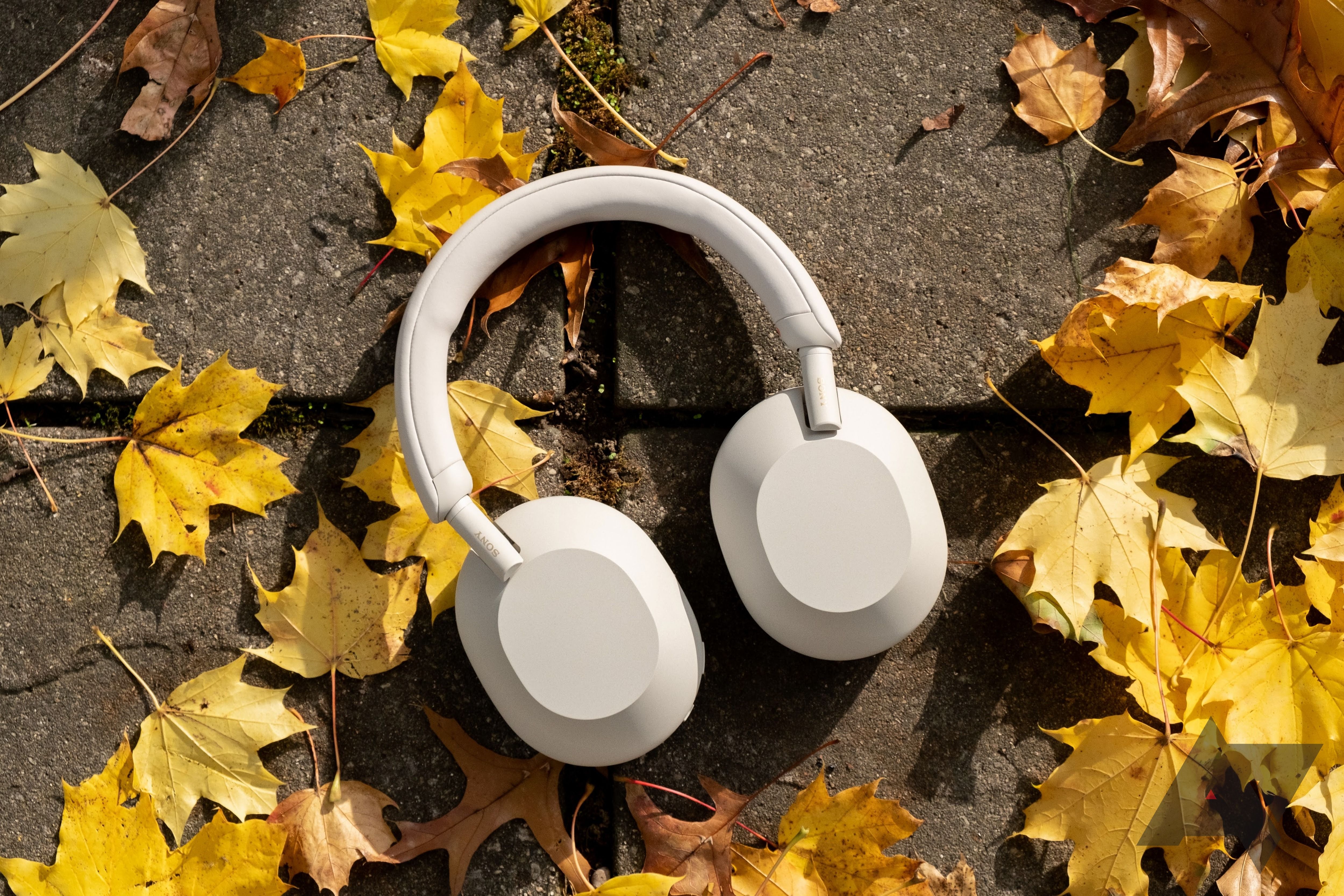
Sony WH-1000XM5 review: The ANC headphones to beat
Class-leading ANC, now in a prettier package
And one rarely gets to say this, but the Apple AirPods Max look like a bargain next to these headphones. They, too, offer a stunning design and exceptional ANC, and they’re significantly lighter. Though they’re limited to AAC, that doesn’t really give the largely AAC-bound Dyson Zone any advantage.
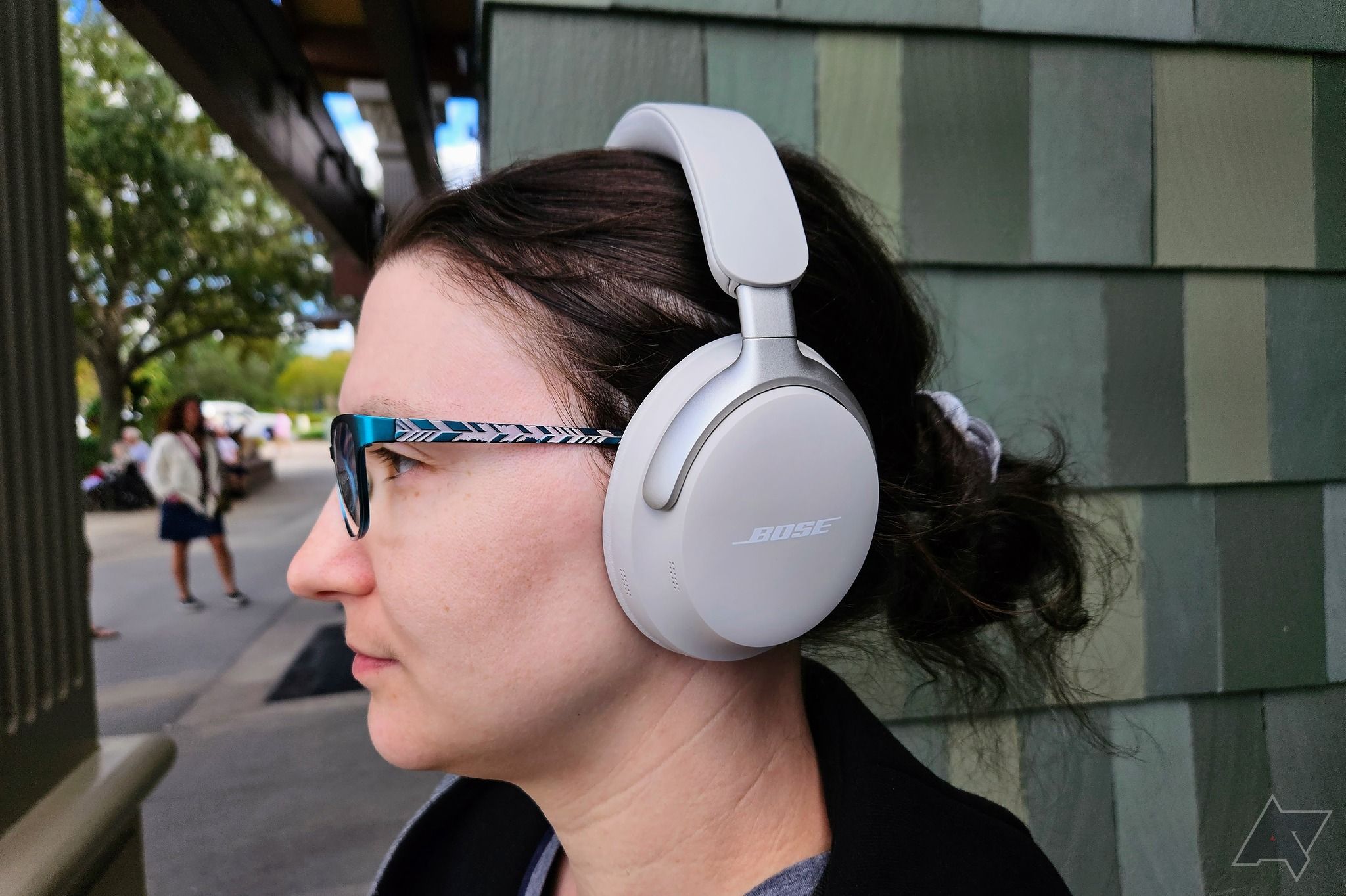
Bose QuietComfort Ultra Headphones review: Paying for near perfection
Don’t just block out the world; refill it with rich stereo sound
Should you buy them?
The Dyson Zone are a curious product. Most people probably shouldn’t bother with them, as plenty of other wireless headphones do so much more for audio and ease of use than these. And a great many of those headphones will be substantially cheaper.
It’s hard to judge the utility of the Dyson Zone’s air filtration system, but it’s to see that it is doing something. And if allergy season brings you down and prevents you from relaxing outdoors, these might be a viable product. That said, the pricing still makes it hard to recommend, as you could still more affordably opt for a solid pair of headphones and an N95 mask that’ll do as much or more for allergies without looking any more bizarre than the visor that attaches to the Dyson Zone.

Dyson Zone
The Dyson Zone are bulky and expensive, and the feature that sets them apart could use a lot more polish.

Best wireless headphones in 2024
Good wireless headphones are an investment — here are all your best options
Source link

